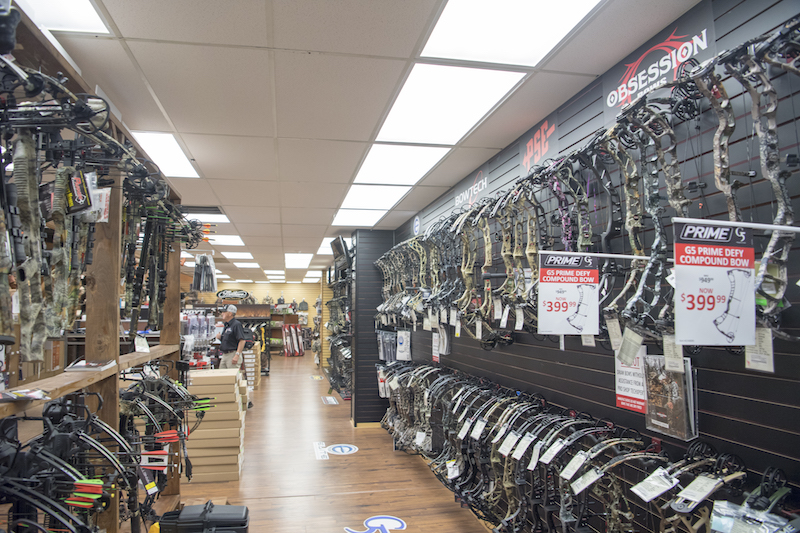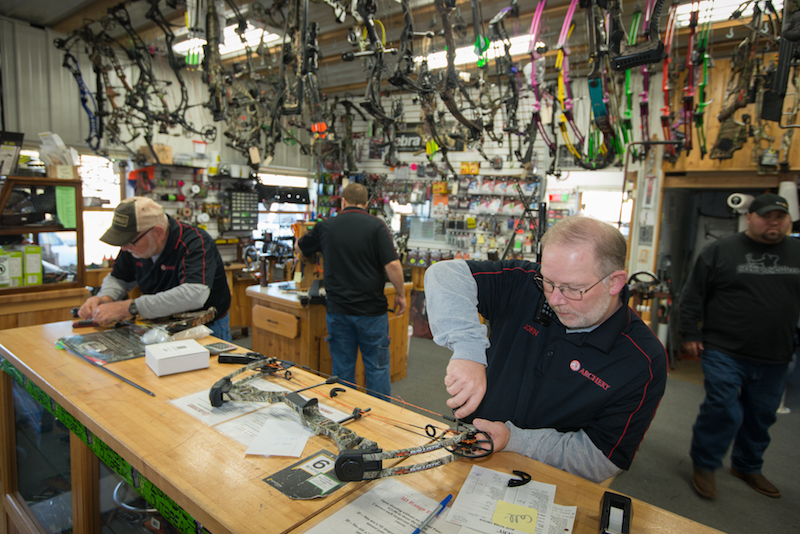Retail
10 Common Mistakes of New Retail Shops
Many new business owners make mistakes early on that doom their shops from the outset. Here’s how to avoid them.
Photo Credit: ATA
Opening a retail store is not for sissies.
Many people dream of running their own business, stocking shelves with products they love, and spending their days talking with fellow archery enthusiasts. For those trying to live that dream, reality isn’t rosy: 50% of small businesses fail within the first year, and 95% fail within five years. And that’s small businesses in general. Tough competition makes new retail stores high-risk ventures.
But not all retail shops are created equal. Many fail when new owners make early mistakes that doom their shops. To avoid those pitfalls, study these 10 common mistakes of new retailers:

If nobody can find your business, you won't have any customers at all. Photo Credit: ATA
Yes, people once went out of their way to find stores that carried products they wanted. Consumers today don’t need to work hard to find what they’re seeking. They can order pretty much anything they want with their smartphone.
That makes location more important than ever for new retail shops. You must be highly visible and easily accessible. If you can’t find a storefront on a heavily traveled road, you need signage that points to your location.
Many archery retailers get into the business because they love archery. Passion for the sport is a major asset in a tough market segment, but you can’t build a business upon passion. You must understand business fundamentals to create lasting success. You must understand profit margins, accounting principles and other fundamentals. If those tasks aren’t your strength, hire someone to handle them or contact the Small Business Administration— or both.
The annual ATA Trade Show is a great place to network with industry experts, see and test hot products, and take advantage of Show-only pricing. But if you’re a new retailer without much sales history to inform your order writing, proceed carefully. It’s easy to buy too much at the Show, especially if you’re “programming” orders and won’t have to pay for them for a few months.
Track how much you owe and, more importantly, when those bills are due. Dating on Show orders is great because you don’t have to pay for it immediately, but those invoices often come due about the same time. If you don’t pay attention, you could have fatal cash-flow problems in September.
If you’re worried about running low on inventory during the busy season, establish good relationships with quality distributors. Good distributors are invaluable partners for retailers but especially for less-established shops. By working with distributors, you don’t have to meet manufacturer minimums, and you can place timely fill-in orders.

Having the best product is great, but nobody will know about it if you don't advertise on social media. Photo credit: ATA
The products you sell are important. But no matter how much your product selections amaze consumers, no one will see those items if no one knows about them.
Too many small-business owners plan to make money first, and market their products and services later when they can afford it. They assume word-of-mouth advertising is enough for a start-up business. That’s not a realistic plan. To make your business profitable, you must develop a marketing strategy.
That said, you don’t need to put lots of money into marketing. Social media helps businesses with small marketing budgets get in front of existing and potential customers. It doesn’t cost much to create appealing content for social-media channels.
When branding, you can fall down rabbit holes of expensive services and products that promise to tell your shop’s “story.” Although you don’t need to plunk down a small fortune to create a complicated brand identity, you must understand what your shop stands for, and how to convey that to consumers.
Are you marketing your store mainly to bowhunters, or do you want to attract recreational archers to your range? Will you sell lots of budget or midrange equipment, or do you want to focus on high-end products people can’t find on Amazon? Everything from your shop’s name to your logo to the colors in your shop must answer those questions.
Also, you should have a store “uniform.” You don’t have to buy logo shirts for your employees, but ask them to wear the same thing, like jeans with white polo shirts. Customers can easily pick out store staff, and your shop will look more professional.
Established retailers have stories about amazing new “must-have” products they excitedly bought in January only to see them in the discount bin months later.
Cool merchandise on your shelves is seldom enough. You must evaluate every product for how well it meets your customers’ needs, and what kind of profit margin it offers. In addition, you need salespeople who are good at hearing what customers really need and matching them with products on your shelves.

WE ARE HERE TO HELP THE INDUSTRY, TO HELP INDIVIDUAL BUSINESSES GET THE MOST OUT OF THE INDUSTRY, AND TO HELP YOU.

It's important that patrons know exactly what services you offer so that they can come back even after they've purchased their bow. Photo Credit: ATA
Retail shops have immense competition, especially from online retailers like Amazon. If you plan to make money strictly from product sales, you’ll struggle.
You must offer services that consumers need from brick-and-mortar stores and online retailers can’t provide. Attract customers by reminding them about your quality bow techs or your exciting range, and they’ll likely find products they need while visiting.
When retailers open, they often hire people they know: friends, family and hunting buddies. But unless your friend or nephew is a great salesperson, you’re probably hurting your business. You’ll have to deal with managing people close to you, and you’ll most likely put them in the wrong roles. Family businesses can succeed, of course, but you must hire people for their skills, not because you like them and their company.
What better way for archery retailers to communicate their love for the outdoors than by filling their shop with taxidermy? Well-done taxidermy can help your branding efforts if it fits your brand’s story.
But you only have so much floor and wall space. The more space you devote to décor, the less space you have for products. Given that products make you money, that’s a problem.
Lots of taxidermy can also turn off recreational shooters. You don’t have to hide your taxidermy in the back — just make sure it’s tastefully displayed.
A little taxidermy can go a long way.
New archery retailers don’t have to go it alone. The ATA offers many resources to members, including access to experienced staff and retailers, service providers, and information about programs that help retailers succeed, as well as the new resource website. If you’re not taking advantage of what the ATA offers, you’re forgoing a wealth of information that could make you part of the select group of new retail shops that survive — and thrive — well past five years.
